
Rediscovering Japan

Rediscovering Japan
Travel (Kawagoe (Saitama))

by tomizuta
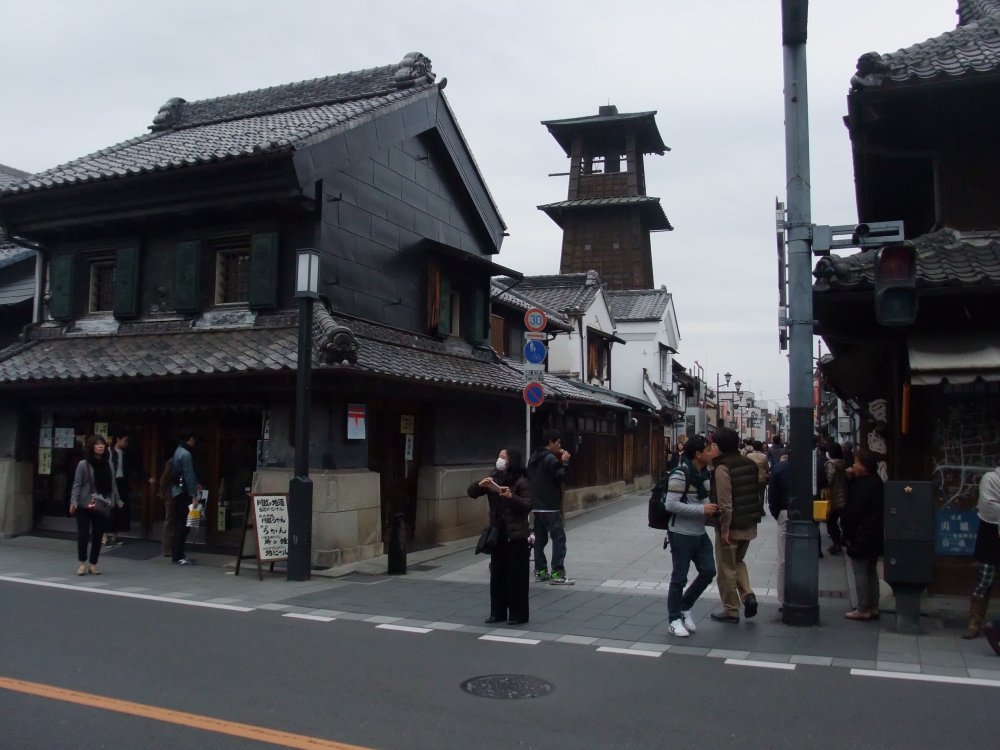
Two classic features of Kawagoe, merchant buildings with EDO-GURO and the
former fire watch tower built in the Edo era, now converted to a clocktower.
So much like Edo, Kawagoe is called Ko-Edo (little Edo).
My wife has been to Kawagoe with her university classmate and on some other
occasions. She revisited Kawagoe with her British friend recently and contributed
the following article.
In the article on Asakusa, I touched upon Edo BUNKA, the culture that developed
and flourished among the townsfolk of Edo. You can see a replica of how
Edo looked like in the Edo era at the Edo-Tokyo Museum in Ryougoku, Tokyo.
But if you wish to experience how the streets in Edo used to look like,
go visit Kawagoe in Saitama Prefecture. Take the Seibu Shinjuku Line Limited
Express Ko-Edo from Shinjuku for 45 minutes and get off at Hon-Kawagoe
Station. 10 minutes walk from the station and suddenly the scene of what
Edo must have looked like appears in front of you. You will be awed by
the blackness of the buildings. The black is called EDO-GURO (Edo black)
which was used for the mortar-plastered black walls of the merchant buildings.
The intent of the black was to pay respect to the white walls of the estates
of the Samurai lords.

The Edo style high street of Kawagoe
Kawagoe is 40 kilometers away from central Tokyo. In the Edo era, goods
were transported by river boats between Edo and Kawagoe and Kawagoe was
strongly linked with Edo. Like Edo fire frequently broke out in Kawagoe,
so they developed the same fire brigade system composed of HIKESHI (fire
fighter groups).
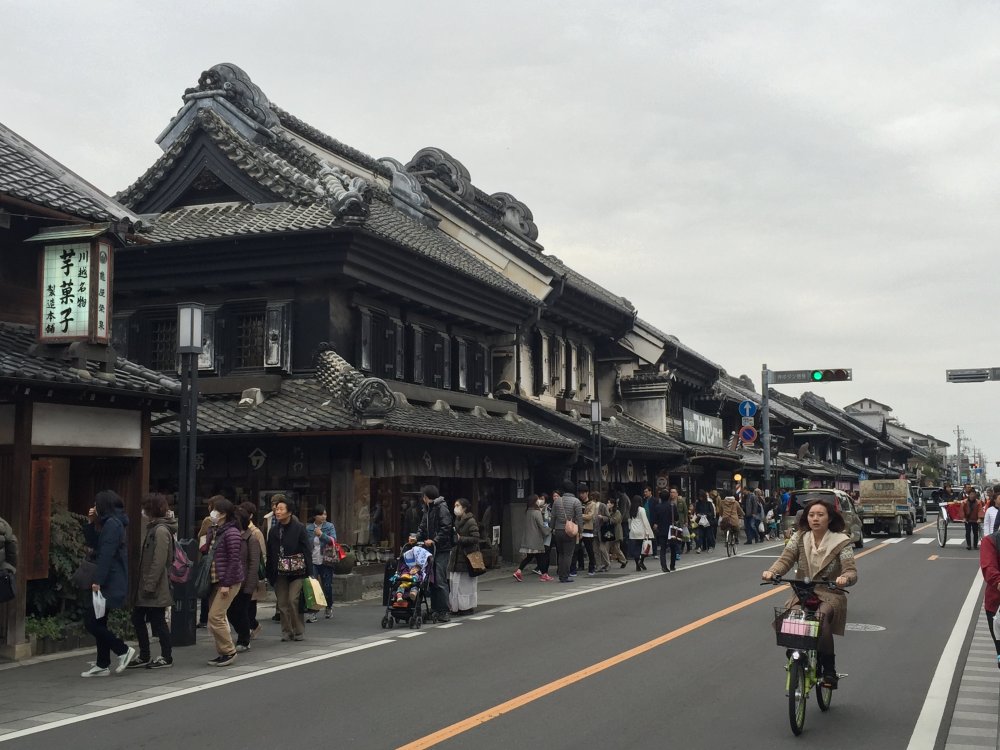
Further down high street. The first queue on the left is in front of a sweet potato shop.
The Great Fire of Kawagoe broke out in 1893 and the area was turned into ashes. They brought a builder experienced in Edo era architecture from Tokyo to reconstruct the area. The reconstructed buildings and streets remain to this day, allowing us to enjoy a street view of an area resembling Edo even more than what remains in Tokyo. The architecture of the area is called KURAZUKURI (storage vault style). The name derives from the thick mortar plastered walls of the buildings which used to be a feature of fireproof storage vaults.
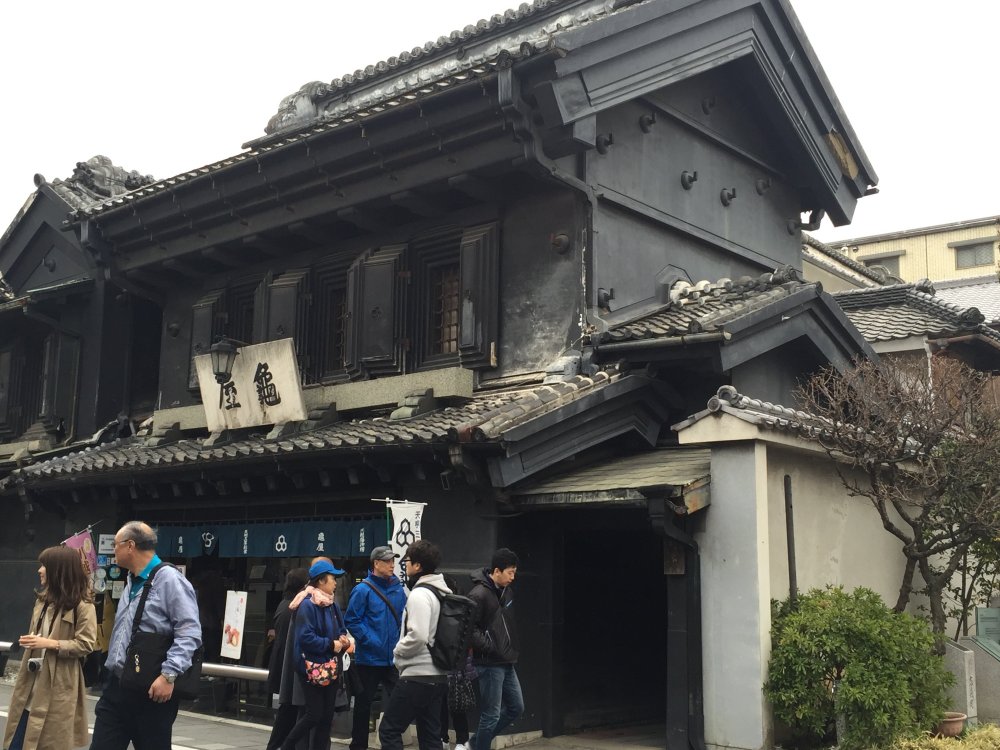
The architecture of the area is called KURAZUKURI (storage vault style).
The high street has a vast range of shops as well as restaurants. I am particularly fond of the bean shop at the corner, and I always purchase broad beans covered by soybean flour when I have the chance to visit Kawagoe. They tell me that they sell more than 70 kinds of ready to eat cooked beans, which they generously offer for free tasting. There are ushers in front of the shop and the small shop is always packed with customers.
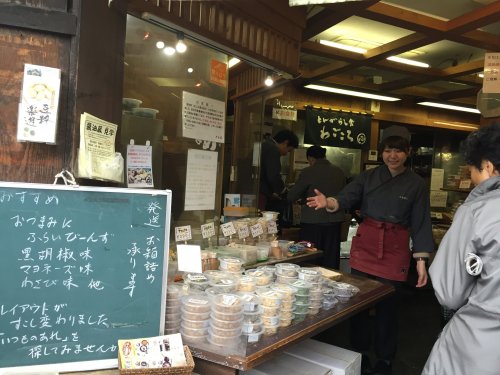
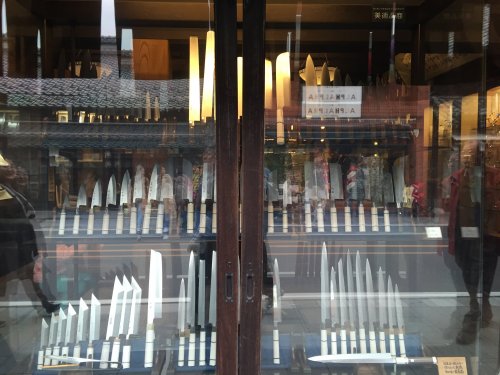
The cheerful ladies explaining the various beans to a customer at the bean shop (left) and the display of the knives shop (right).
Itfs a bit away from the high street area, but you shouldnft miss Kita-in. This is a historic Buddhist temple of the Tendai sect said to have been founded in the Nara era (710-794 AD). The entire temple with the exception of the Sanmon Gate was lost in the Great Fire of Kawagoe in 1638. The third Tokugawa shougun Iemitsu helped the reconstruction of the temple. He also ordered part of Edo Castle to be relocated to the temple. These buildings are still there, and if you go inside you can see the room where Iemitsu was born as well as that of his mother Kasuganotsubone.
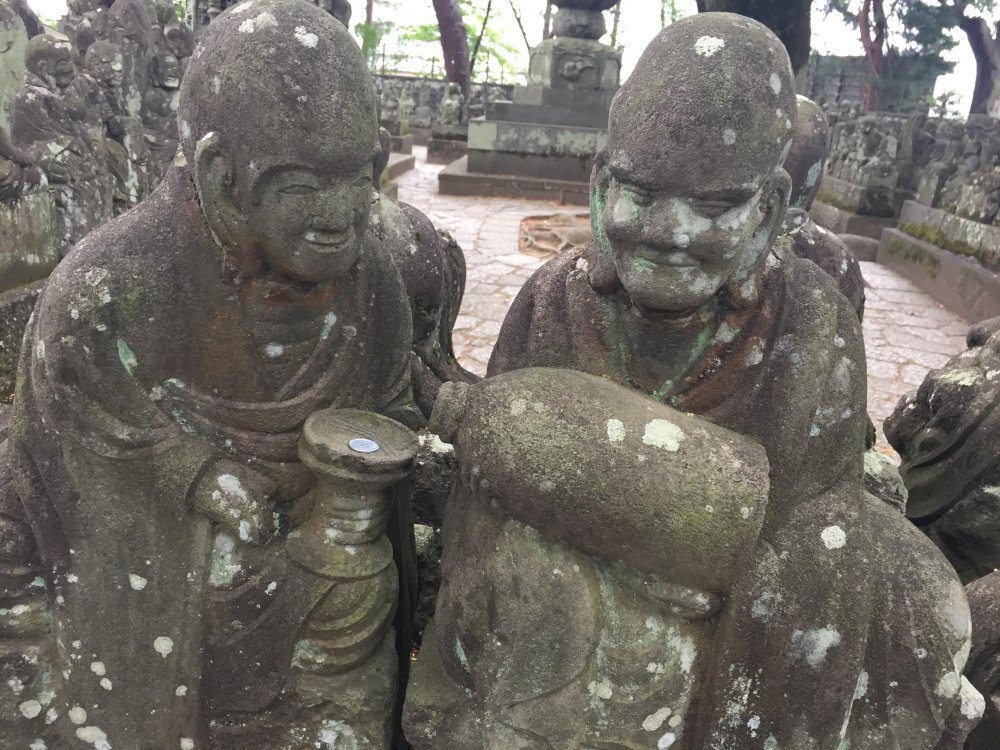
RAKANs that are apparently enjoying drinks at Kita-in.
There are 500 hand graved RAKANs (priests) in the temple grounds. I understand that the 500 RAKANs are the disciples of Buddha who got together when Buddha passed away to deliver the true message of Buddha. There are many 500 RAKANs around the country. Some are priestly or godly. Others like those in Kita-in display all types of unique characteristics.
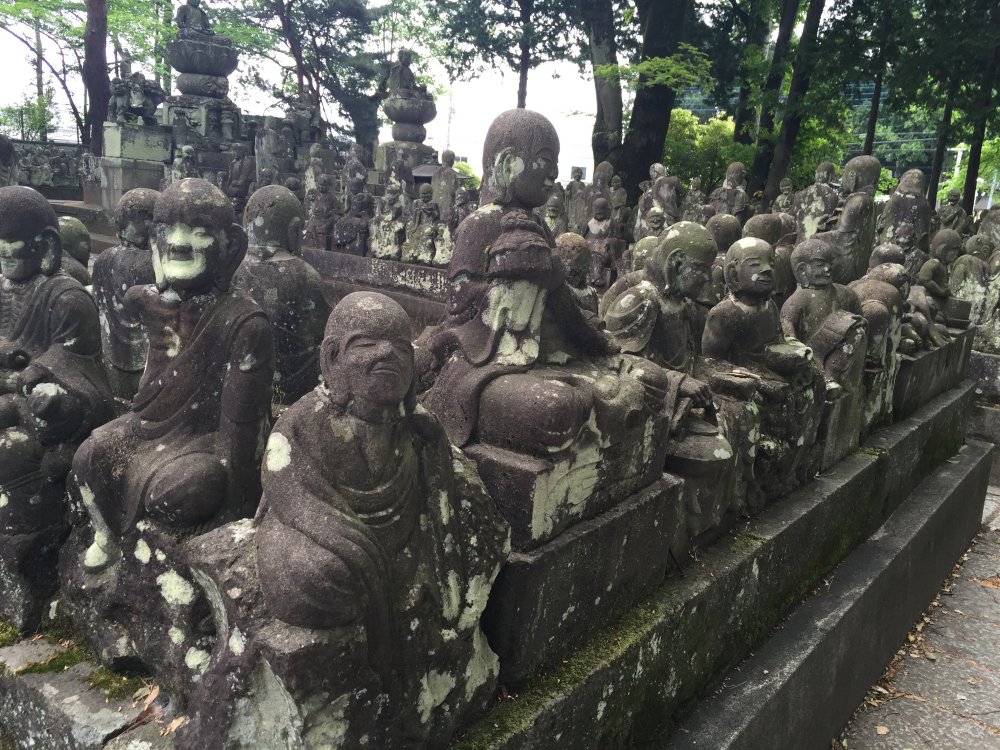
Look at all the unique RAKANs in Kita-in
I love RAKANs that warm me up looking at their faces, so I visit them whenever
I learn of their existence while on travel. The 500 RAKANs at Iwami Silver
Mines were all unique and lively, such that you could almost hear them
talking to you. The RAKANs in the woods in Tono (See Iwate part 2) were
scattered in the hillside. They had been heavily eroded and were difficult
to find initially. But once found, they displayed a very appealing aura.
When I was a child, my grandfather told me that if I take a close look
at all the RAKANs, that I was sure to find a familiar face. When I introduced
Kawagoe to an Englishman the other day, I noticed a RAKAN very much resembling
him. Unfortunately, I cannot show you his picture, but here is that RAKAN
so alike himc
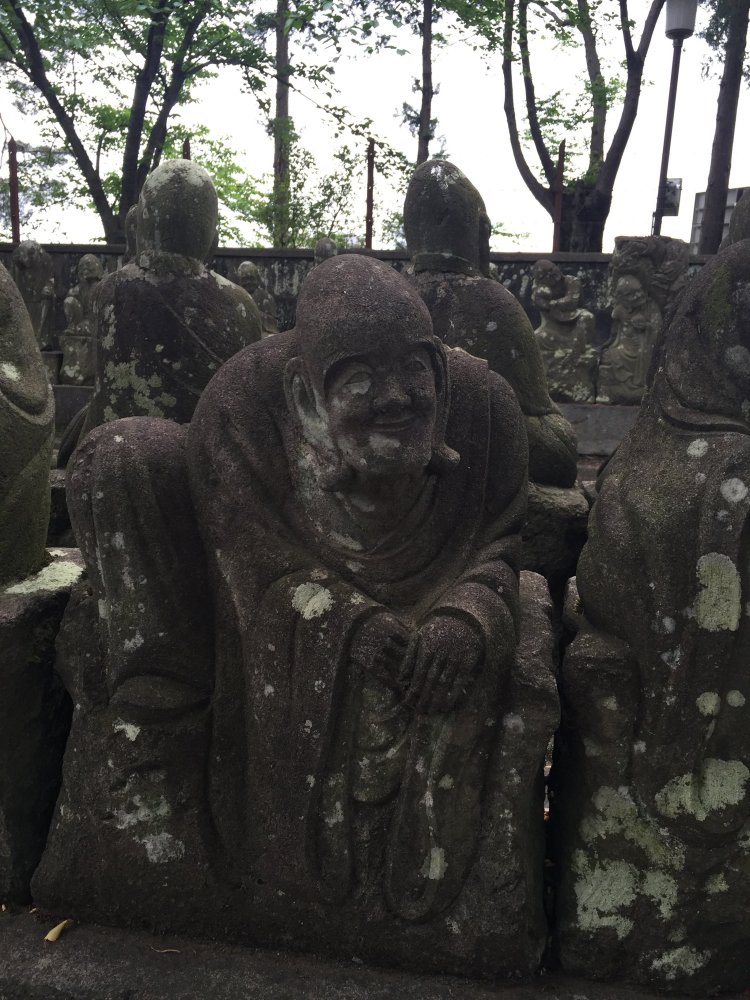
A humourous RAKAN smiles at you